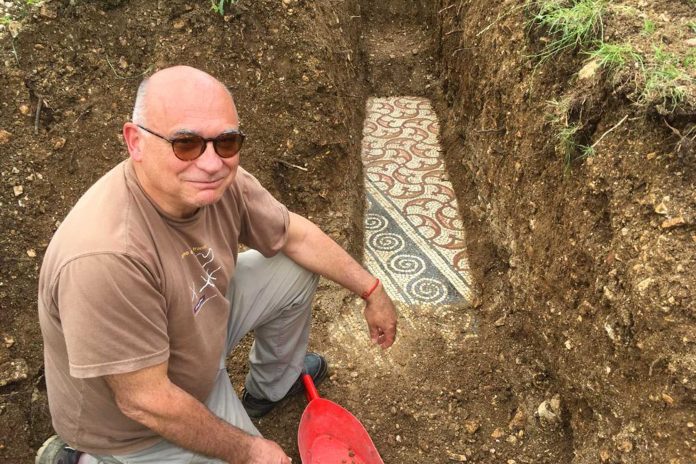
Archaeologists have briefly revealed a well-preserved mosaic floor of an ancient Roman villa first discovered almost a century ago near the northern Italian city of Verona.
The mosaic in bright shades of red, pink, orange, purple and yellow appeared to be ”in a good state of conservation,” from what archaeologists observed after gingerly digging a trench between vineyards in the hills of Valpolicella, Gianni de Zuccato, the official in charge of archaeology in Verona province, said Friday.
Mosaics revealing the site of an ancient villa were first discovered in 1922. Archaeologists have been doing partial digs to determine the scale of the original villa and in preparation to transform the area into a museum. The recent discovery of two nearby mosaic floors confirmed the villa extended north and south of the original site.
The dig from May 18-22 was the fourth since July and went ahead only after restrictions imposed as part of Italy’s coronavirus lockdown were lifted. The unearthed mosaic from the villa’s servants’ quarters dates from the 3rd century and has since been covered back up.
”After numerous failed attempts, finally a part of the flooring and foundation of the Roman villa discovered a century ago has been brought to light,” the city administration of Negrar, the town where the site is located, said in a Facebook post.
The city said archaeological officials would decide with landowners and Negrar officials the best way to make the site accessible to the public.
The original excavation in 1922 revealed the remains of a villa of some 270 square meters that had intricate mosaics covering set into the floors of multiple rooms. The ongoing project aims to continue study of the site to fully reveal its story while protecting the dig and eventually putting a protective covering over it ”with the goal of creating a museum that can be visited by the public.,’ officials said.



















